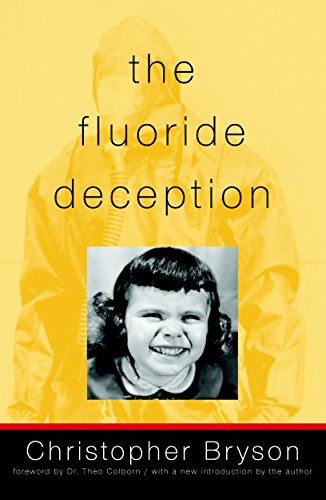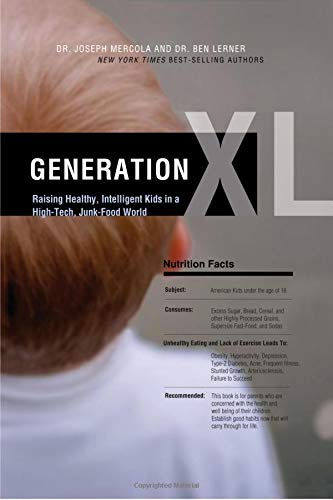The 35-year-old U.S. federal law regulating tap water is so out of date that the water Americans drink can pose what scientists say are serious health risks, even if it meets all legal standards.
Only 91 contaminants are regulated by the Safe Drinking Water Act, yet more than 60,000 chemicals are used within the United States. Government and independent scientists have scrutinized thousands of those chemicals in recent decades, and identified hundreds associated with a risk of cancer and other diseases at small concentrations in drinking water. But not one chemical has been added to the list of those regulated by the Safe Drinking Water Act since 2000.
Recent studies have also found that even some chemicals regulated by that law pose risks at much smaller concentrations than previously known. However, many of the act’s standards for those chemicals have not been updated since the 1980’s, and some remain essentially unchanged since the law was passed in 1974.
Sources:
 The Fluoride Deception
Best Price: $5.99
Buy New $16.35
(as of 03:45 UTC - Details)
The Fluoride Deception
Best Price: $5.99
Buy New $16.35
(as of 03:45 UTC - Details)
Dr. Mercola’s Comments:
Drinking pure uncontaminated water as your primary fluid is one of the most important and foundational health principles. And tap water, despite the regulations that purportedly keep it pure, is filled with contaminants – some of them pollution, and some of them deliberately put in your water by the government.
Unfortunately, you simply can’t tell your water is safe by the way it looks, tastes, or smells. Some contaminants in water are so harmful that they are measured in "parts per million" or "parts per billion." In other words, just a drop of these poisons added to, in some cases, a swimming pool full of water would be hazardous to your health
Drugs in Your Drinking Water
One unintended consequence of the drug focused health care paradigm plaguing the United States is the increasing number of drugs finding their way into drinking water supplies.
 The Drinking Water Boo...
Best Price: $1.27
Buy New $7.85
(as of 04:10 UTC - Details)
The Drinking Water Boo...
Best Price: $1.27
Buy New $7.85
(as of 04:10 UTC - Details)
Drugs get deposited into your drinking water via two routes.
- First, drugs that you take, or that are given to livestock, do not necessarily become inert in your body. Some of the active components are not absorbed, and so they are deposited into sewage treatment centers that are not always looking for, or removing, prescription drugs.
- Second, unused prescription drugs are sometimes flushed down the toilet or deposited into landfills by individuals, hospitals and pharmaceutical companies, where they ultimately end up back in the environment.
Many drugs in your water supply are known to have dangerous side effects. Drugs that were only intended for external application are being ingested (and vice versa). And people are being exposed to combinations of drugs that should never be combined.
The best way to reduce environmental drug pollution is also the simplest and most obvious – seek to eliminate the number of drugs you take in the first place.
The vast majority of drugs are dangerous and unnecessary band-aids that treat symptoms without ever addressing underlying health problems. Of course, to curb the pollution problem, drug use will also have to be greatly reduced among livestock and other animals in the food supply.
Rocket Fuel and Heavy Metals
Perchlorate, an oxidant used in fireworks and road flares and as an accelerant in rocket fuel, has been found in the water supplies of 36 states. This chemical can interrupt the production of thyroid hormones, which are needed for pre- and postnatal development.
Another potential consequence is hypothyroidism. The EPA has predicted that the effect could ultimately lead to the development of thyroid tumors – a conclusion the agency based on the occurrence of thyroid tumors in rats exposed to perchlorate.
 The Water Conspiracy
Best Price: $8.04
(as of 06:55 UTC - Details)
The Water Conspiracy
Best Price: $8.04
(as of 06:55 UTC - Details)
Heavy metals are also seeping into your water. These are inorganic chemical elements with relatively high density, such as mercury, arsenic, chromium, cadmium, nickel and lead. They are toxic even at low concentrations. They usually accumulate in your water supply through human activity, such as industrial and consumer waste.
But even your own home can be a source of heavy metal contamination – in homes built before the late 1980’s, lead and copper can leach into the passing water from water pipes and soldered joints on the way to your tap.
Left unchecked, heavy metal poisoning can lead to chronic nerve, brain and kidney damage, as well as blood disorders.
Chlorine and Fluoride
The above contaminants would be bad enough all by themselves. But the chemicals which are deliberately added to your water may be even worse.
You’d think people would realize that if chlorine is toxic enough to kill bacteria and other potentially infectious life forms when added to water, it might not be the safest thing to drink. In fact, if you drink water disinfected by chlorine while pregnant, it can increase your child’s risk of heart problems, cleft palate or major brain defects.
In addition to this problem, cancer-causing agents are created when disinfectant chemicals like chlorine come in contact with organic materials already in water, among them trihalomethanes. And, that’s why washing dishes with antibacterial dish soaps in tap water isn’t safe for you either.
Fluoride can be every bit as toxic as chlorine. Fluoride is a toxic industrial chemical. Although it has been widely promoted as being healthy for the public, in reality, fluoride is a poison that may harm your health. It is even used in rat poison.
Fluoride accumulates in your bones, making them brittle and more easily fractured, and in your pineal gland, which may inhibit the production of the hormone melatonin, which helps regulate the onset of puberty. It has also been found to increase the uptake of aluminum into your brain and lead into your blood.
If you are just finding out about the dangers of fluoride and want to know more, The Fluoride Deception by Christopher Bryson is an excellent resource. You can also review What Your Dentist Isn’t Telling You About Fluoride for more information on the dangers of fluoride.
Tap Water Gives You Cancer
What’s the result of all these contaminants? A serious danger stemming from the very water you need to survive.
Six studies, examining a combined total of almost 8,000 people, indicated that higher consumption of tap water can increase the risk of bladder cancer. Men who drank more than 2 liters of tap water a day ran a 50 percent higher risk of bladder cancer.
At least 13 million people in the U.S. are at increased risk of bladder and lung cancer as a result of high levels of the heavy metal arsenic in the water supply. Young boys exposed to fluoridated tap water suffer an increased risk of osteosarcoma – bone cancer – when they reach adolescence. Chlorine and antibacterial soaps can produce yet more carcinogens in your water.
 Natural Dentist Health...
Check Amazon for Pricing.
Natural Dentist Health...
Check Amazon for Pricing.
Bottled Water is Not the Answer
I do not suggest using bottled water as an alternative because of the extreme toll it takes on the environment. Bottled water is also usually just as unsafe as tap water. Like tap water, bottled water is often tainted with fluoride and chlorine, and some of it is just as polluted.
Right now, the best way you can provide pure water to your family is by using a reverse osmosis filter, which you can install in your home. You may also want to filter the water that you use to bathe and wash with, as this can be a significant source of exposure to toxins as well.
Remember that you can still be exposed to contaminated water when you:
- Shower or bathe
- Wash your hands
- Wash laundry
- Rinse fruits and vegetables
- Wash dishes, glasses, and other utensils
Although a distillation unit will also remove fluoride from your water, I personally do not recommend drinking distilled water. Distilled water has the wrong ionization, pH, polarization, and oxidation potentials, and if you drink it for too long it can drain your body of necessary minerals.
 Generation XL: Raising...
Best Price: $0.25
Buy New $8.00
(as of 10:15 UTC - Details)
Generation XL: Raising...
Best Price: $0.25
Buy New $8.00
(as of 10:15 UTC - Details)
What I Use to Filter My Water
My favorite, and the one I personally use, is a high-quality reverse osmosis (RO) filter. You just need to add a few minerals back to the water, but the water is far superior to distilled water. RO reliably removes virtually every possible contaminant that could be in the water, providing pure water for your health and the health of your family.
I have been seeking to offer one to readers for over 10 years, but have not been able to make a recommendation. The reason I do not currently offer one is that we are still researching filters that don’t require someone with professional installation experience. Most of them are not very user friendly.
Another problem with nearly all R/O filters is keeping the holding tank clean. You need to pay very careful attention to regularly draining it at least weekly, otherwise mold and bacteria might build up.
Related Links:
- Beware of Lead in Your Tap Water
- Drugs in Your Drinking Water May be Affecting Your Health
- Why Tap Water Can Harm Your Kids
January 7, 2010





